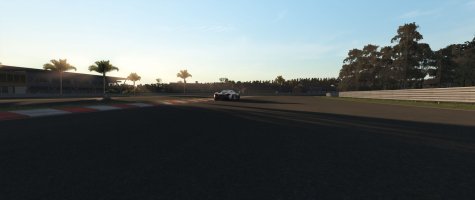I've never noticed feeling anything from the BK at the pedals, or from the pedals to the seat.
Use Spoiler? Not sure what you are asking.
I thought I had everything expanded out already.
Ah, what I meant was if uploading various images of Simhub settings place them within a "Spoiler" that way those not interested in this little conversation won't have to scroll through all the images, that are now on the other page.
Don't need videos etc all were doing is confirming what you have and how it is used where it is felt.
At a fairly quick glance over your settings and taking into account what configuration you have.
Thanks for sharing your settings for some deeper looking into them.
This without of course any audio analysis just looking at your settings taking into account your configuration.
Just my observations:
Parametric RPM = All channels (varied volume)
RPM = Shifter & Seat
*Same effect layers applied to different units, no specific usage of frequencies to individual units
* Very limited range of Hz used to represent the effect that would generate the most frequencies
Gearshift = All channels (except shifter?)
* Very simple usage of a single layer at 28Hz, no specific usage of frequencies to individual units
Road Vibration = All Channels
Two sets of layers for Front & Rear units
This currently the only layer for stereo effects being used
Stereo layers at front Aura
Mono combined at Rear for BK
*Appears front units are being given more range of frequency for the effect than the rear with larger BK using less low frequencies instead of what would be expected and it using same or even more.
Impacts = All channels (varied volume)
Two sets of layers
Effect being sent to all units.
*Spatialization is set to FRONT/REAR for "Front" which operates as dual mono
Aura units are installed as stereo so should use LEFT/RIGHT to maintain indvidual stereo feedback.
*Spatialization is set to FRONT/REAR for only "Back" operating on BK
*No major difference in frequencies being used
Wheelslip = Aura & BK
Two sets of different layers for front/rear units
*No major difference in frequencies being used
*Spatialization is set to FRONT/REAR for "Front" which operates as dual mono.
Aura units are installed as stereo so should use LEFT/RIGHT to maintain individual stereo feedback.
*Spatialization is set to CORNERS for "Rear" BK
Active via both Rear Left & Rear Right
*Using LEFT/RIGHT to match correctly set front wheels would bolster the front slip in seat as well as both rear channels activity.
Overview:
Limited stereo usage being applied with a restricted potential of maintaining stereo feedback. This partly due to the common installation approach using both L/R units on the same horizontal plate/contact surface enabling easy stereo crosstalk.
Instances of usage Per Channel
Aura Stereo = 5
Aura Shifter = 3
BK = 8
Usage of simplistic single layers with same frequencies going to BK/Aura in several effects
Often similar frequencies are used to represent different effects.
Only 1 operating stereo effect with Wheelslip needing fixed
Only White Noise is used for below 20Hz and below 10Hz with the BK
BK is the most used unit but appears as being underused regards its potential low-frequency abilities
No usage of G based effects for additional stereo sensations or acceleration/deceleration
Aura on the shifter is being underused but not actually used for shift effect
Recommendations
Possibly remove the Aura Pro as stereo is not being well used or implemented.
Reconfigure the installation to focus on mono with improved usage of large BK capabilities
Consider 1xTST unit as these are smoothest and one of the best for RPM detailing and harmonics
Consider 2nd BK for pedals replacing all Aura - Its energy will also be felt at the shifter
Seek to build effects that use individual layers and frequencies suited to each unit
Feel much better low bass extension and with higher detailing TST or multi-exciters will bring.











